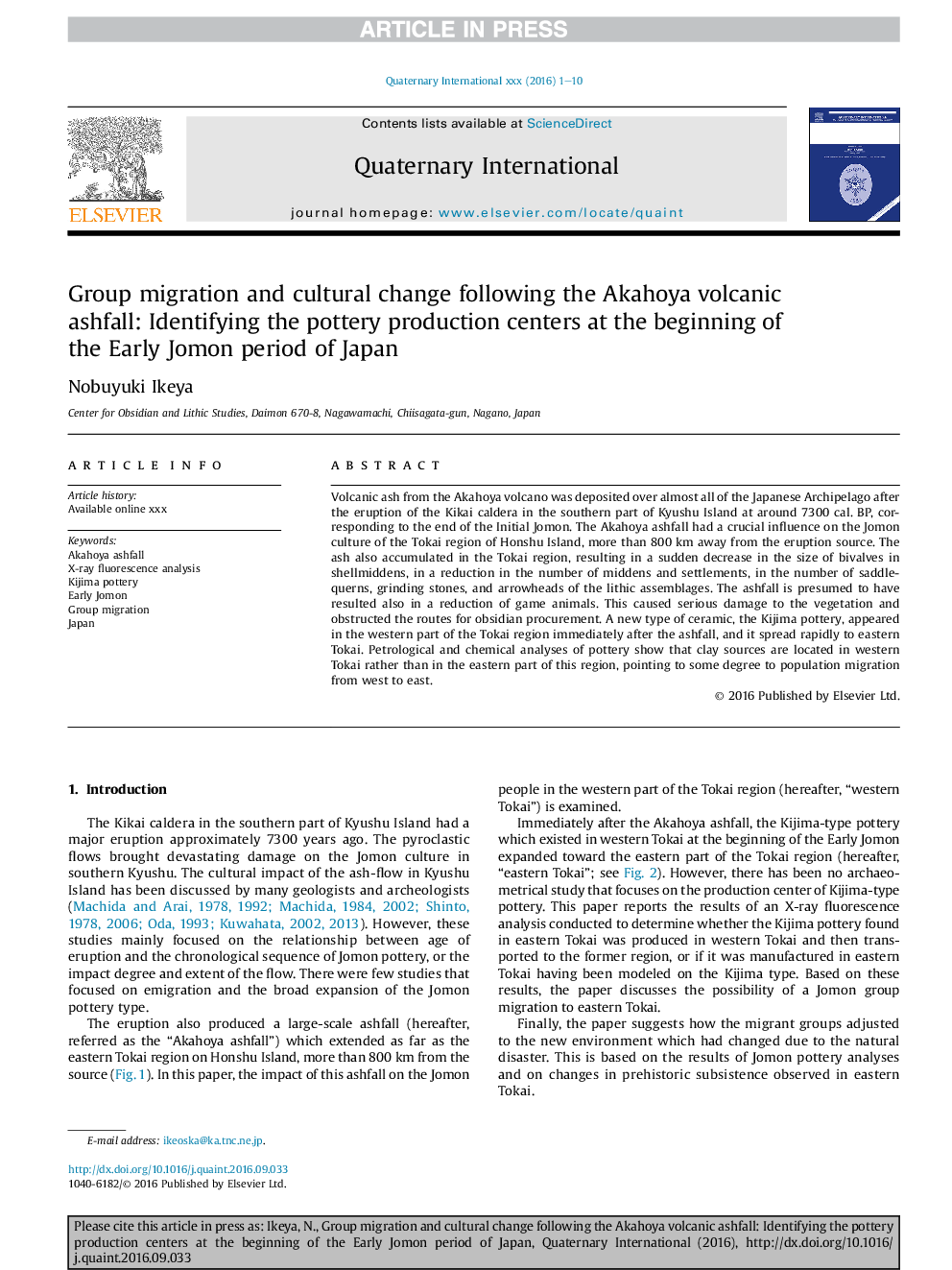| کد مقاله | کد نشریه | سال انتشار | مقاله انگلیسی | نسخه تمام متن |
|---|---|---|---|---|
| 5113279 | 1377923 | 2017 | 10 صفحه PDF | دانلود رایگان |
عنوان انگلیسی مقاله ISI
Group migration and cultural change following the Akahoya volcanic ashfall: Identifying the pottery production centers at the beginning of the Early Jomon period of Japan
ترجمه فارسی عنوان
مهاجرت گروهی و تغییر فرهنگی پس از آتشفشان آکوهیا: شناسایی مراکز تولید سفالی در آغاز دوره ژیمون ژاپن
دانلود مقاله + سفارش ترجمه
دانلود مقاله ISI انگلیسی
رایگان برای ایرانیان
موضوعات مرتبط
مهندسی و علوم پایه
علوم زمین و سیارات
زمین شناسی
چکیده انگلیسی
Volcanic ash from the Akahoya volcano was deposited over almost all of the Japanese Archipelago after the eruption of the Kikai caldera in the southern part of Kyushu Island at around 7300Â cal. BP, corresponding to the end of the Initial Jomon. The Akahoya ashfall had a crucial influence on the Jomon culture of the Tokai region of Honshu Island, more than 800Â km away from the eruption source. The ash also accumulated in the Tokai region, resulting in a sudden decrease in the size of bivalves in shellmiddens, in a reduction in the number of middens and settlements, in the number of saddle-querns, grinding stones, and arrowheads of the lithic assemblages. The ashfall is presumed to have resulted also in a reduction of game animals. This caused serious damage to the vegetation and obstructed the routes for obsidian procurement. A new type of ceramic, the Kijima pottery, appeared in the western part of the Tokai region immediately after the ashfall, and it spread rapidly to eastern Tokai. Petrological and chemical analyses of pottery show that clay sources are located in western Tokai rather than in the eastern part of this region, pointing to some degree to population migration from west to east.
ناشر
Database: Elsevier - ScienceDirect (ساینس دایرکت)
Journal: Quaternary International - Volume 442, Part B, 30 June 2017, Pages 23-32
Journal: Quaternary International - Volume 442, Part B, 30 June 2017, Pages 23-32
نویسندگان
Nobuyuki Ikeya,
